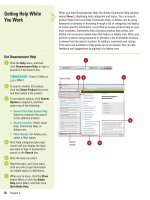You should spend about 20 minutes on this task 6 pot
Bạn đang xem bản rút gọn của tài liệu. Xem và tải ngay bản đầy đủ của tài liệu tại đây (77.47 KB, 2 trang )
You should spend about 20 minutes on this task.
The table below shows the proportion of different categories of families
living in poverty in Australia in 1999.
Summarise the information by selecting and reporting the main features,
and make comparisons where relevant.
You should write at least 150 words.
Give reasons for your answer and include any relevant examples from your own
knowledge or experience.
Family type
Proportion of people from each
household type living in poverty
single aged person
aged couple
single, no children
couple, no children
sole parent
couple with children
all households
6% (54,000)
4% (48,000)
19% (359,000)
7% (211,000)
21% (232,000)
12% (933,000)
11% (1,837,000)
model answer:
The table gives a breakdown of the different type of family who were living in poverty in
Australia in 1999.
On average, 11% of all households, comprising almost two million people, were in this
position. However, those consisting of only one parent or a single adult had almost doubt
this proportion of poor people, with 21% and 19% respectively.
Couples generally tended to be better off, with lower poverty levels for couples without
children (7%) than those with children (12%). It is noticeable that for both types of
household with children, a higher than average proportion were living in poverty at this
time.
Older people were generally less likely to be poor, though once again the trend favoured
eldery couples (only 4%) rather than single eldery people (6%).
Overall the table suggests that households of single adults and those with children were
more likely to be living in poverty than those consisting of couples.









